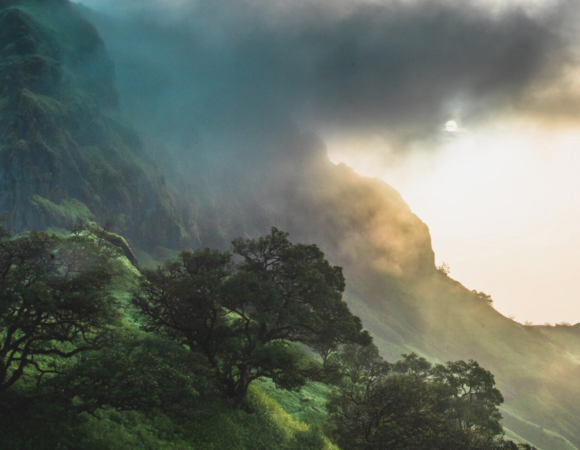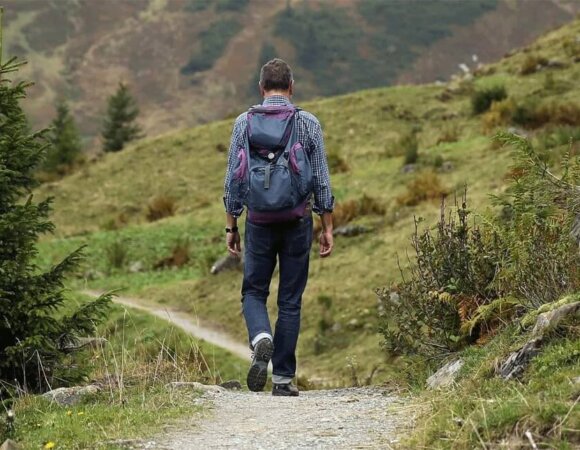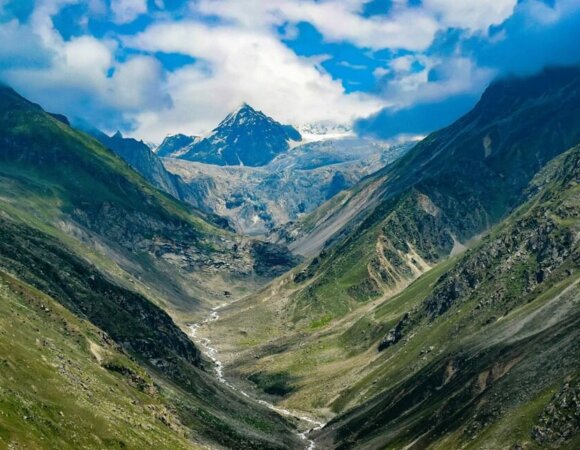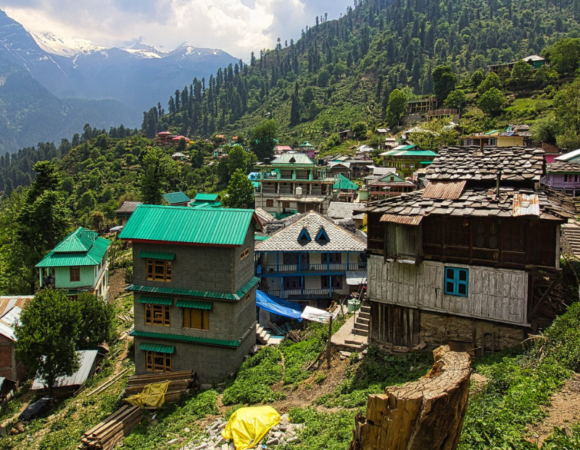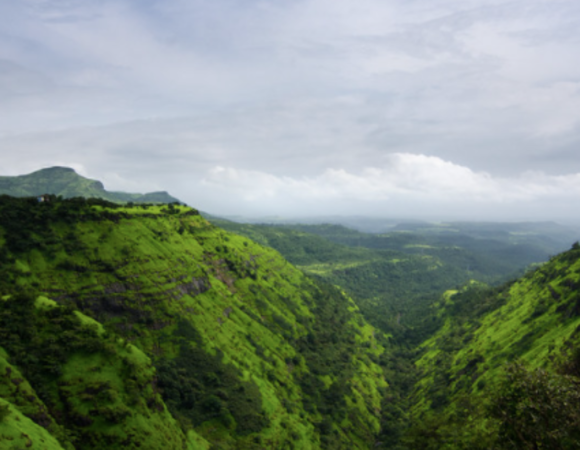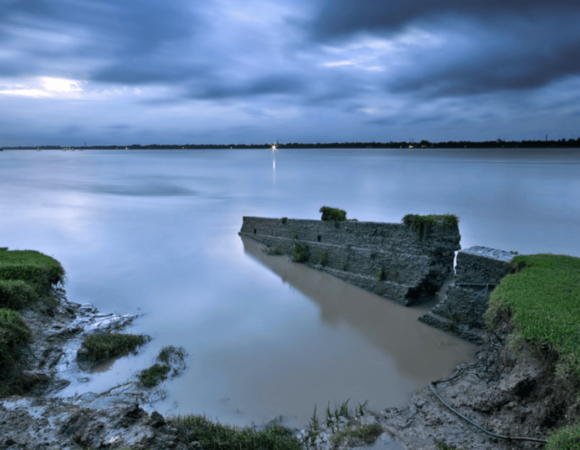Must-Do Stretches Before Your Trek
In this blog, we’ll highlight six important stretches that will help you effectively warm up before your trek.
Table of Contents
ToggleStretching before you head out on a trek is essential to prepare your body. It’s not just about feeling good, it’s about staying safe and enhancing your performance. Stretching increases flexibility, prevents injuries, and boosts your endurance. When you stretch, you’re warming up your muscles, which helps you move more easily and comfortably.
- Stretching improves flexibility, allowing for better movement.
- It helps prevent muscle stiffness and cramping.
- Enhances your endurance, so you can trek longer with less fatigue.
- These stretches ensure your body is prepared for the challenges of a trek.
Why Stretching is Essential for Trekkers
Stretching is not just a pre-trek routine; it’s a key part of keeping your body healthy and strong throughout your hike. Here are some reasons why it’s vital for trekkers:

- Prevents Muscle Stiffness and Cramps
Stretching helps your muscles stay loose and flexible. Without proper stretching, muscles can tighten up, leading to cramps or discomfort during your trek.
- Improves Blood Circulation and Mobility
Stretching increases blood flow to your muscles, helping them stay energized and less prone to fatigue. Improved circulation also helps with joint mobility, making your movements smoother.
- Enhances Posture and Endurance
Proper stretches help with body alignment and posture, crucial for maintaining energy over long distances. A good posture can prevent unnecessary strain on your back, legs, and feet.
- Reduces Risk of Injuries
Stretching helps reduce the risk of injuries like sprains, strains, or muscle tears. By preparing your body beforehand, you’re less likely to push your muscles beyond their limits during your trek. Proper warm-up stretches help your body handle the physical demands of hiking better.
Stretching isn’t just about flexibility; it’s about preparing your muscles and joints for the journey ahead, ensuring that your trek is both enjoyable and safe.
6 Must-Do Stretches Before Your Trek
Stretching before your trek helps ensure that your muscles are warm, flexible, and ready for the physical challenges ahead. Here’s an explanation of each stretch to guide you through the proper technique and its benefits.
1. Quadriceps Stretch (Thigh Stretch)
This stretch targets the quadriceps, the large muscles at the front of your thighs. Stretching them helps improve flexibility and prevents tightness, which is important when you’re climbing uphill or descending. Tight quadriceps can limit your movement and make it harder to hike efficiently, especially on steep inclines or declines.

How to do it:
- Stand tall and grab one ankle with your hand, bringing it toward your glutes.
- Make sure your knees stay together as you pull your foot toward your bottom.
- Hold the stretch for 20-30 seconds per leg, then switch sides.
Why It Works:
The quadriceps are heavily involved in walking, climbing, and descending, so warming them up prevents stiffness and reduces the chance of muscle strains.
Tip:
If balancing is tricky, hold onto a tree or rock to help you stay steady while stretching.
2. Hamstring Stretch
The hamstrings are the muscles at the back of your thighs. Stretching them helps prevent tightness that can affect your stride length, especially when hiking on uneven terrain. Tight hamstrings can also lead to back pain or injury over time, especially on long treks.
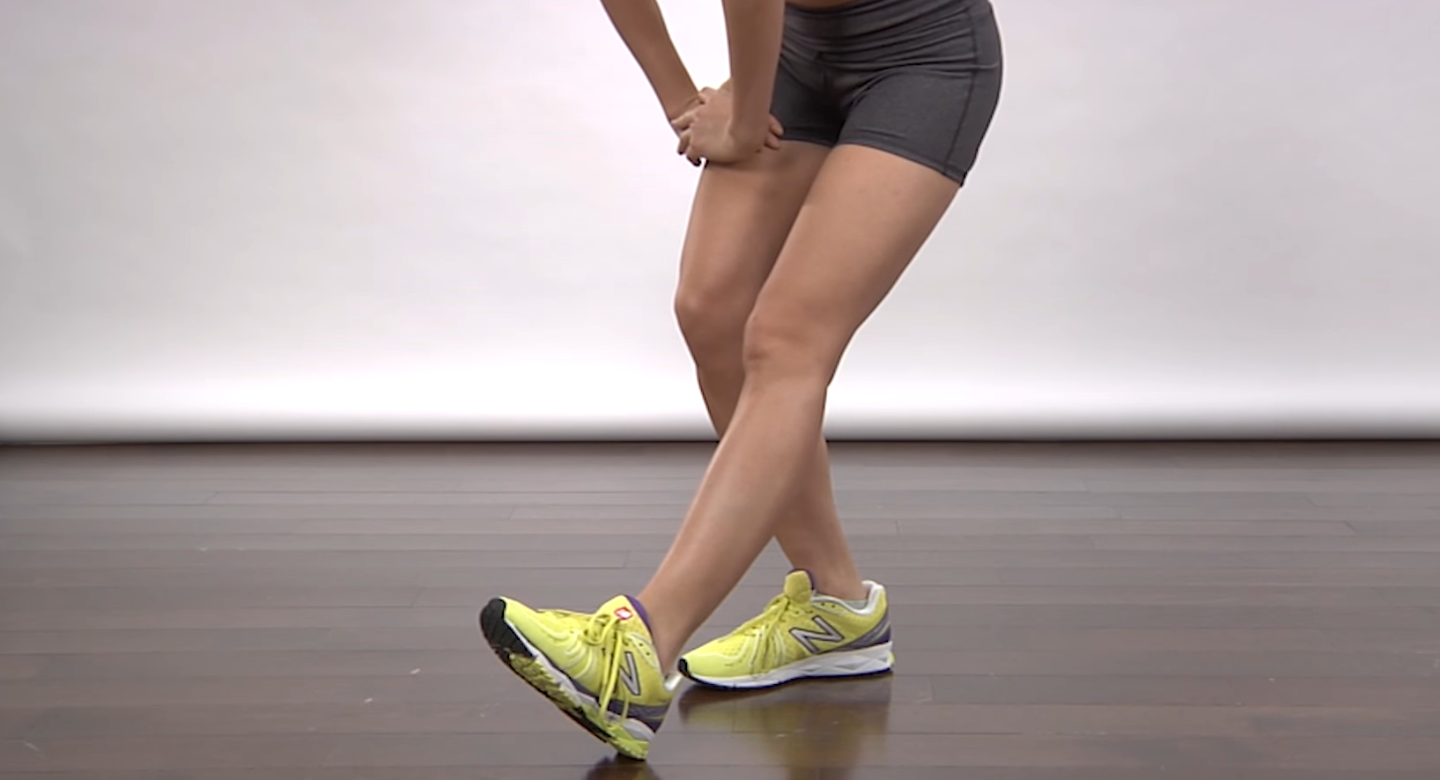
How to do it:
- Stand with one foot slightly ahead of the other.
- Keep your back straight and bend forward from your hips, reaching toward the toes of your extended leg.
- You should feel a stretch in the back of your thigh and possibly in your lower back.
- Hold for 20-30 seconds on each leg.
Why It Works:
Stretching the hamstrings helps maintain flexibility, allowing for more powerful and efficient strides.
Tip:
Do not bounce while stretching. Keep movements slow and controlled to avoid overstretching or injuring the muscle.
3. Calf Stretch
The calf muscles (gastrocnemius and soleus) are critical for walking and climbing. Tight calves can lead to discomfort in the lower legs, especially when trekking on steep or uneven surfaces. Stretching them also helps prevent injuries to the Achilles tendon, which can occur from overuse or poor flexibility.

How to do it:
- Step one foot forward and extend the other leg back, keeping both heels on the ground.
- Lean your body slightly forward while keeping your back leg straight, which will stretch the calf of the back leg.
- Hold the position for 20-30 seconds per leg, then switch sides.
Why It Works:
The calf muscles are responsible for propelling you forward with every step, so stretching them ensures better mobility and reduces the risk of strain or injury.
Tip:
If you need extra support, you can use a rock or tree to help deepen the stretch. This provides more stability during the stretch.
4. Hip Flexor Stretch
The hip flexors are muscles located at the front of your hips. They play a major role when you lift your knees and when you climb. Tight hip flexors can lead to discomfort, especially on long treks. Stretching them helps improve flexibility, allowing for smoother and more efficient movement.

How to do it:
- Step one foot forward into a lunge position.
- Keep the back leg straight, and lower your hips toward the ground to feel a stretch in the front of your hip.
- Hold for 20-30 seconds per side.
Why It Works:
Stretching the hip flexors helps open up your hips, which is essential for long climbs or walking on challenging terrains.
Tip:
Make sure your upper body stays upright and tall while stretching. This allows you to fully stretch the hip flexors and avoid overstretching your back.
5. Lower Back Stretch
Your lower back can take a lot of strain during a trek, especially if you’re carrying a heavy backpack. Stretching the lower back helps relieve tension and improves flexibility, which is essential for maintaining proper posture and comfort during long hikes.

How to do it:
- Stand with your feet about shoulder-width apart.
- Slowly bend forward at the waist, reaching for your toes (or as close as you can).
- Let your head and neck relax as you stretch your back.
- Hold for 20-30 seconds.
Why It Works:
Stretching the lower back helps prevent tightness and discomfort, allowing you to move more freely without the risk of back strain.
Tip:
If you can’t reach your toes, try bending your knees slightly to avoid stressing your back too much. Focus on lengthening your spine as you stretch.
6. Shoulder and Upper Back Stretch
This stretch targets the shoulders and upper back, which can become tense and stiff from carrying a backpack during a trek. Stretching these areas helps alleviate tension, improve posture, and reduce the risk of shoulder or upper back pain, especially during long hikes.
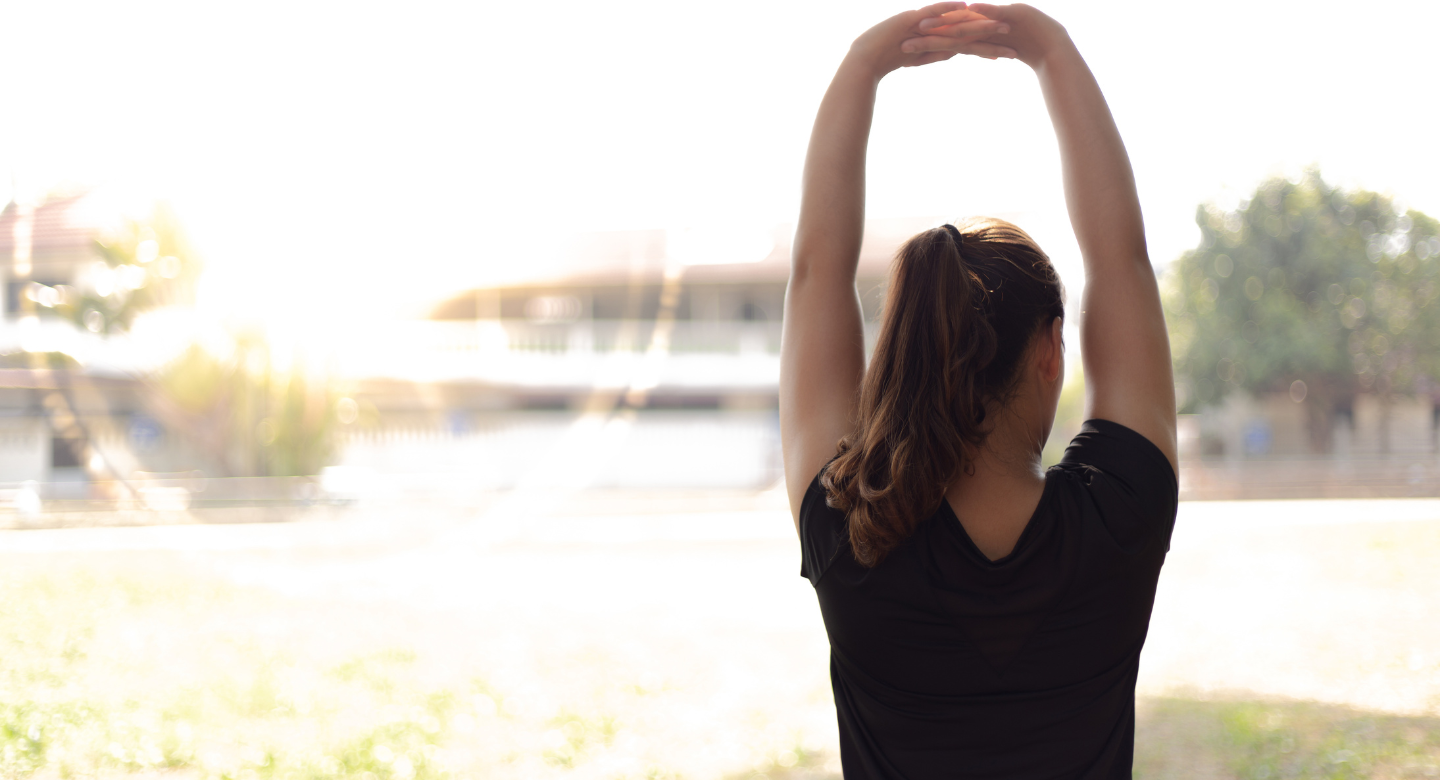
How to do it:
- Cross one arm across your chest, so your forearm is parallel to the ground.
- Use your opposite hand to gently pull the crossed arm closer to your body, feeling the stretch in the shoulder and upper back.
- Hold the stretch for 20-30 seconds on each arm, then switch sides.
Why It Works:
Carrying a backpack for long periods can strain the shoulders and upper back, causing discomfort or tightness. This stretch helps release that tension, allowing for better movement and less discomfort during your trek.
Tip:
As you stretch, keep your shoulders relaxed and avoid shrugging them up toward your ears. This ensures you’re getting the full benefit of the stretch without adding extra tension to the area.
Additional Tips for Effective Stretching
To get the most out of your pre-trek stretching routine, keep these tips in mind:
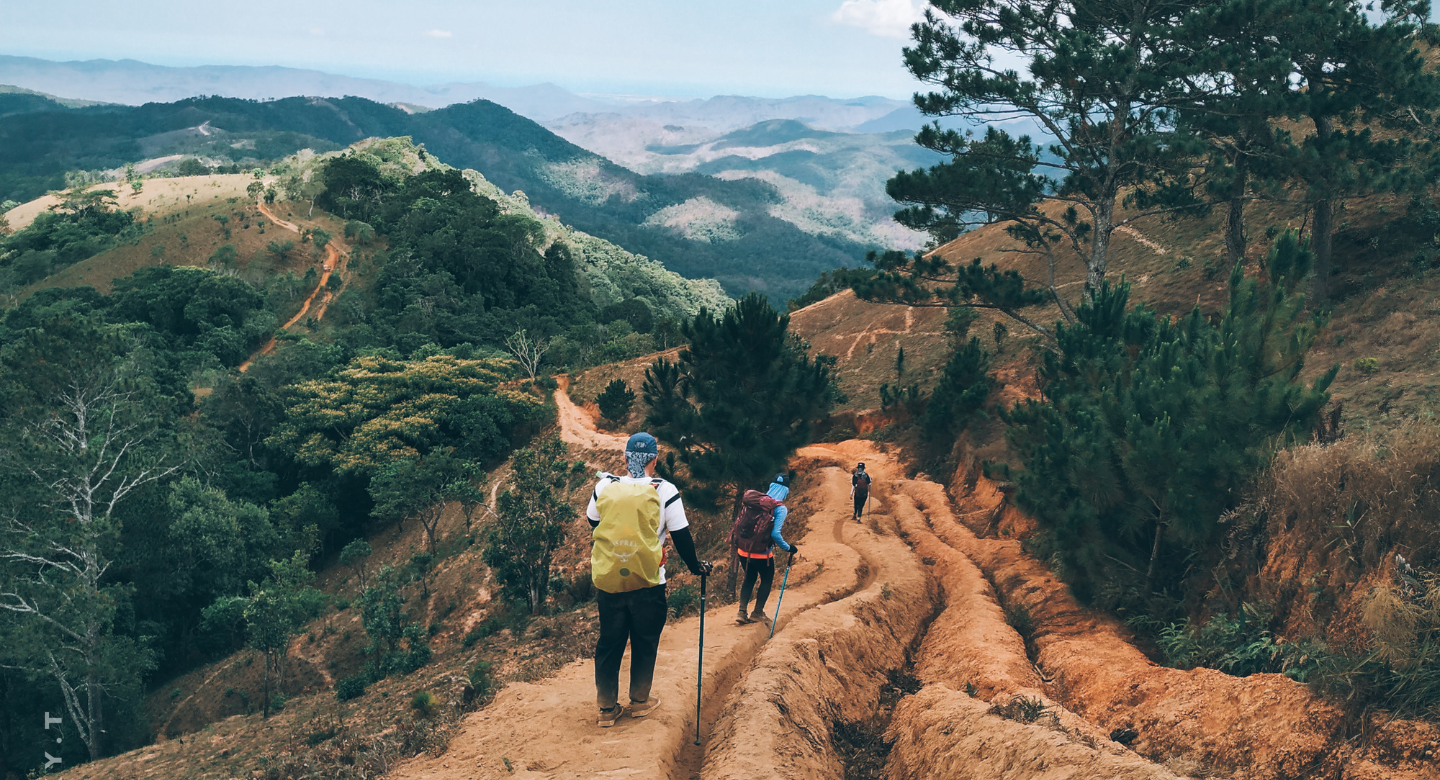
- Perform Each Stretch Slowly and Avoid Jerky Movements
Stretching should be a controlled, smooth process. Jerky movements can lead to overstretching and increase the risk of injury. Slowly ease into each stretch to allow your muscles to adjust.
- Breathe Deeply and Relax Into Each Stretch
Deep breathing helps you relax your muscles and reduces any tension. As you stretch, take slow, deep breaths and exhale gently to release any tightness in the body.
- Stretch Both Sides Evenly to Maintain Muscle Balance
To prevent muscle imbalances, be sure to stretch both sides of your body equally. Skipping stretches on one side can lead to uneven flexibility and increase the risk of strain or discomfort.
- Hydrate Before Stretching for Better Muscle Flexibility
Hydration plays an important role in muscle flexibility. Dehydrated muscles are more likely to cramp or feel tight, so make sure to drink water before you start your stretching routine for maximum benefit.
Conclusion on Must-Do Stretches Before Your Trek
Stretching before your trek is an important step to ensure your body is ready for the physical demands of the trail. It helps improve flexibility, prevents muscle injuries, and boosts your overall endurance. By incorporating these simple stretches into your pre-trek routine, you’ll feel more prepared, comfortable, and less prone to fatigue during your hike.
Try these stretches before your next trek and feel the difference! Do you have a favorite pre-trek stretch? Share it in the comments below! Let’s help each other prepare for our next adventure. Happy trekking!
Read More :
Best stretches for trekking
5 knee strengthening exercises to do before a trek
How to avoid knee pain and injuries on treks
Frequently Asked Questions (FAQs) on Must-Do Stretches Before Your Trek
Why is stretching important before a trek?
Stretching is essential before a trek because it warms up your muscles, increases flexibility, prevents stiffness, and reduces the risk of injury. Proper stretching can also improve your endurance, making your trek more enjoyable and less physically taxing.
How long should I hold each stretch before trekking?
Each stretch should be held for 20-30 seconds per side. This allows your muscles enough time to loosen up and become more flexible without overstretching them.
Can stretching prevent injuries during a trek?
Yes, stretching helps improve flexibility and mobility, which can reduce the risk of injuries such as sprains, strains, and muscle tears. It prepares your body to handle the physical demands of trekking.
How often should I stretch before a trek?
You should stretch every time before starting a trek, even if it’s a short hike. A quick pre-trek routine can help ensure your muscles are properly warmed up and ready to perform.
Can I stretch after a trek too?
Absolutely! Stretching after a trek helps relax your muscles, reduce tightness, and speed up recovery. Post-trek stretching can help prevent muscle soreness and improve flexibility over time.
Should I stretch if I’m feeling tight or sore?
If you feel tight or sore, stretching can help alleviate discomfort by increasing blood flow and flexibility. However, if you’re experiencing sharp pain or an injury, it’s better to rest and consult a healthcare professional.
Are there any stretches I should avoid before trekking?
Avoid deep or aggressive stretches that force your muscles beyond their range of motion, as these can cause injury. Always focus on gentle stretches that allow your muscles to ease into the movement.
Can I stretch without a warm-up?
It’s best to do light activity before stretching, such as walking for 5–10 minutes, to raise your body temperature. Stretching cold muscles can increase the risk of injury, so a brief warm-up will help prepare your muscles for stretching.
What if I don’t have time for a full stretching routine?
If you’re short on time, focus on the major muscle groups that will be used during your trek, such as the legs, hips, and back. Even a quick 5-minute stretch routine will benefit you compared to no stretching at all.
Can these stretches be done by beginners?
Yes, these stretches are simple and can be done by anyone, regardless of experience level. Just be sure to perform each stretch slowly and carefully, listening to your body. If you’re new to stretching, start with gentler stretches and gradually increase the duration as you become more comfortable.

